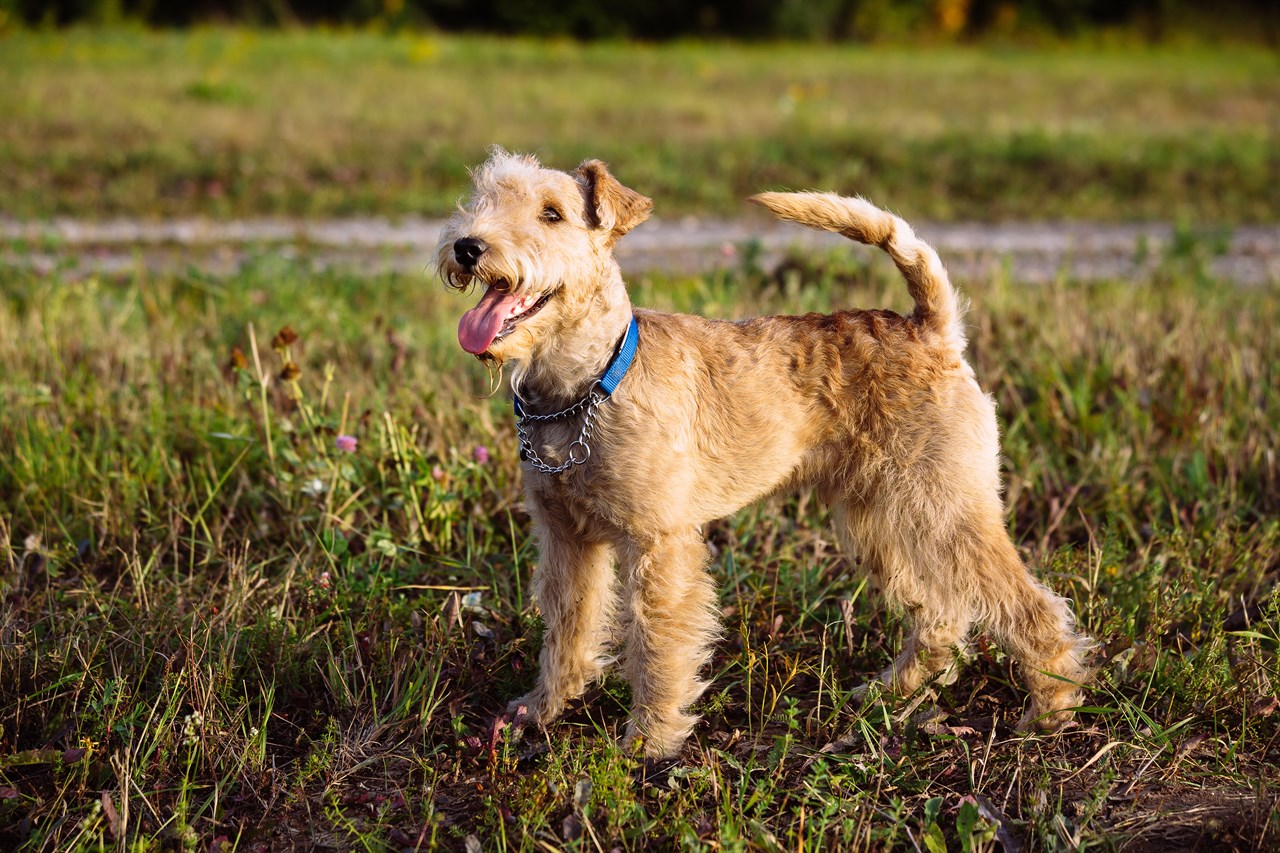Lakeland Terrier: A Feisty and Charming Breed

Introduction
The Lakeland Terrier, a small but spirited breed, has earned a place in the hearts of dog lovers for its distinctive appearance and engaging personality. Often described as "big dogs in a small package," Lakeland Terriers have a rich history, a unique coat, and a set of intriguing characteristics that make them a fascinating breed to explore. In this comprehensive long-form piece, we will delve into the history, breed group, size, coat, colour, appearance, and more. Furthermore, we will address common questions regarding this breed's tail, size comparison with Welsh Terriers, and the differences between the two breeds.
Breed History
The history of the Lakeland Terrier traces back to the rugged region of the Lake District in the United Kingdom. These terriers were initially bred in the 19th century to assist in hunting small game, such as otters and foxes. Farmers and hunters in the region needed a fearless, tenacious, and compact dog to navigate the challenging terrain and flush out game from rocky crevices and dense vegetation. The Lakeland Terrier, with its determination and small size, was the perfect solution.
Also Known As
Lakeland Terriers are also known as Patterdale Terriers in some regions, though this name is more commonly associated with a slightly different breed. They are primarily recognised simply as Lakeland Terriers, named after the Lake District in England where they originated.
Breed Group and Size
Lakeland Terriers belong to the Terrier group, a category of dogs known for their spirited nature and strong hunting instincts. In terms of size, Lakelands are considered small to medium-sized dogs. They typically stand around 33-36 cm at the shoulder and weigh between 7-8 kg.
Breed Coat, Colour, and Appearance
One of the most striking features of the Lakeland Terrier is its unique double coat. The outer coat is dense, wiry, and weather-resistant, while the undercoat provides insulation. Their coat comes in a variety of colours, including:
- Blue and Tan
- Black and Tan
- Red
- Wheat
- Grizzle
Lakelands have a distinct facial expression characterised by a wiry beard, bushy eyebrows, and an alert, lively expression. Their V-shaped ears sit high on their head, and their tail is traditionally docked.
Are Lakeland Terriers' Tails Docked?
Yes, historically, Lakeland Terriers have had their tails docked. Tail docking is a practise that involves the removal of a portion of a dog's tail. It was done for various reasons, including preventing injury during hunting and maintaining a neat appearance. However, it's important to note that tail docking has become a contentious issue in recent years, and in many countries, it has been banned or restricted. Therefore, whether a Lakeland Terrier's tail is docked may vary depending on the breeder and local regulations.
Is a Lakeland Terrier Bigger than a Welsh Terrier?
Lakeland Terriers and Welsh Terriers share some similarities, but there are also distinct differences. In terms of size, Lakeland Terriers are slightly smaller than Welsh Terriers. While both breeds are considered small terriers, Lakelands typically stand at 33-36 centimetres, whereas Welsh Terriers are slightly taller, ranging from 36-40 centimetres.
What's the Difference Between a Lakeland and Welsh Terrier?
Although Lakeland Terriers and Welsh Terriers may look similar to the untrained eye, there are several key differences between the two breeds:
- Coat Texture: Lakeland Terriers have a dense, wiry coat, whereas Welsh Terriers have a wiry but softer coat.
- Tail Docking: As mentioned earlier, tail docking has historically been more common in Lakeland Terriers than in Welsh Terriers.
- Ear Shape: Lakeland Terriers typically have V-shaped ears that sit high on their head, while Welsh Terriers have smaller, triangular-shaped ears that fold over.
- Colours: Lakeland Terriers come in a broader range of coat colours compared to Welsh Terriers.
- Temperament: While both breeds are spirited and active, Lakeland Terriers are known for their feisty and independent nature, whereas Welsh Terriers tend to be more reserved and aloof.
Conclusion
The Lakeland Terrier, with its rich history, distinctive appearance, and spirited personality, is a breed that continues to capture the hearts of dog enthusiasts worldwide. Whether you're drawn to their unique coat, charming expression, or hunting heritage, Lakelands are undeniably special. While they share similarities with Welsh Terriers, understanding the subtle differences between the two breeds can help you choose the perfect companion for your lifestyle and preferences. Tailored care and love will ensure that your Lakeland Terrier thrives as a cherished member of your family.
Continue reading our Lakeland Terrier in-depth articles
- Lakeland Terrier Temperament and Behaviour
- Lakeland Terrier Training and Socialisation
- Lakeland Terrier Toilet Training
- Lakeland Terrier Barking Habits
- Lakeland Terrier Grooming Requirements
- Lakeland Terrier Shedding Behaviour
- Lakeland Terrier Sleeping Behaviour
- Lakeland Terrier Diet and Feeding Requirements
- Lakeland Terrier Average Lifespan
- Lakeland Terrier Exercise Requirements
- Lakeland Terrier Common Health Issues
- Lakeland Terrier Suitability Guide
- Lakeland Terrier Advantages
- Lakeland Terrier Disadvantages
- Lakeland Terrier Price to Buy and Own
- Lakeland Terrier Clubs and Links
- Selling Lakeland Terrier Puppy Litters and Dogs
- Buying Lakeland Terrier Puppies and Dogs
- Lakeland Terrier Alternatives
Lakeland Terrier puppies for sale
- Find Lakeland Terrier puppies for sale in ACT
- Find Lakeland Terrier puppies for sale in NSW
- Find Lakeland Terrier puppies for sale in NT
- Find Lakeland Terrier puppies for sale in QLD
- Find Lakeland Terrier puppies for sale in SA
- Find Lakeland Terrier puppies for sale in TAS
- Find Lakeland Terrier puppies for sale in VIC
- Find Lakeland Terrier puppies for sale in WA